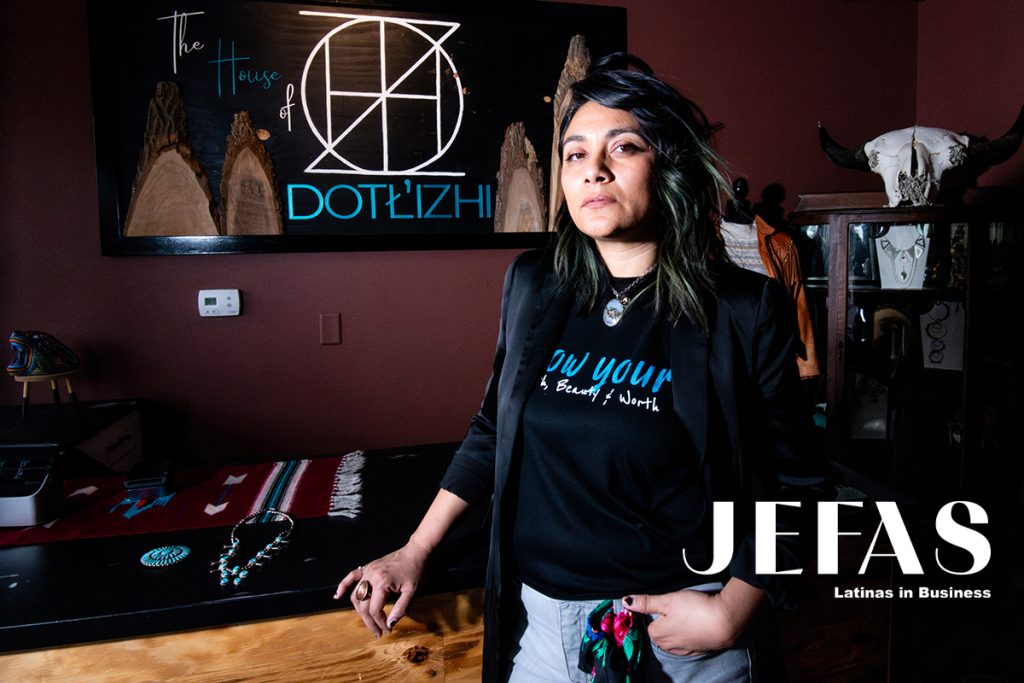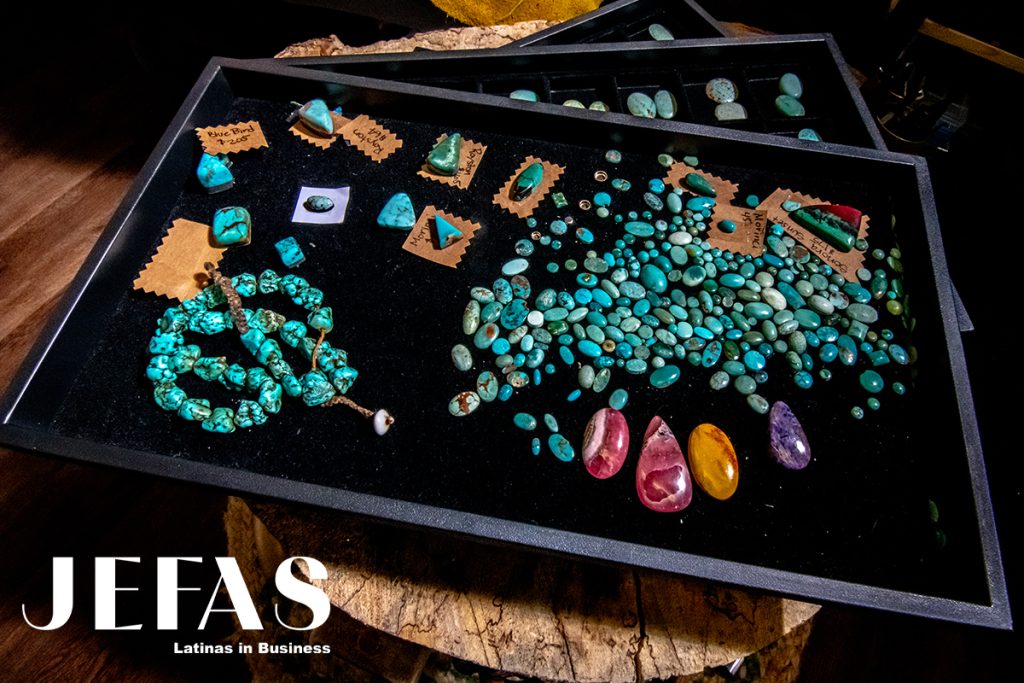Honoring Her Native Roots, Designer Redefines Jewelry

Foto de Miriam Alarcón Ávila
By Chuy Renteria
As she sits across from me, I can’t help but notice the little stylistic touches Alicia Velasquez adds to her ‘fit. The hair that frames her glasses transitions to blue at its ends. The ring on her finger is handmade, no doubt made by her own hands and a product of The House of DOTŁ’IZHI (Dot-Cluh-Gee), the jewelry boutique store she owns and operates in Iowa City.
It feels like our meeting, a coffee shop chat for this profile, has been a long time coming. Mutual contacts have attempted to connect us in that way those who possess marginalized identities try to connect one another in a place populated by the majority. With that, though, there is another part to sift through, and Alicia cut right to it when we first greeted each other. “Here’s the thing, I don’t identify as Mexican,” Alicia says as we arrive at the potentially fraught topic of identity. “I am Apache, Yaqui, and Spanish. The Yaqui are all throughout Mexico but that’s not Mexican, right? The way that Mexicans think of themselves as Mexicans.” It is an important distinction that gets at the root of Alicia’s work with her jewelry at The House of DOTŁ’IZHI. “Growing up we called ourselves Chicanas. So, you can put that down but really, I’m Native.”
Discovering Native American Traditions Through Craft
Alicia punctuates this declaration with a story from her youth. “I was having a hard time figuring myself out.” She alludes to some of the troubles she got into, sprinkling in the term “chola”. “One day a friend goes, ‘I know exactly where you need to be,’ and she takes me to a powwow. I remember the first time I heard it. It was the drums,” she says as her hand pantomimes beating a pulse. “Next thing I was looking at myself in the bathroom crying like, what is going on?”
In multiple ways pursuing the answer to that question has been a journey for Alicia. In the physical sense (originally from California, she’s lived in multiple states before calling Iowa home) but a journey in a metaphysical and cultural sense as well. Part of which was figuring out the parts of herself through the Apache lens of her father, who she remembers working on his beadwork at the table by his bed. It was her father and elders like him that taught Alicia beadwork, leatherwork, silversmithing, sewing, embroidery, and the other techniques that led her to running an online business. Upon the move to Iowa City, she decided to open her first brick-and-mortar store, named after the western Apache word for turquoise.
Redefining Native American Jewelry in Modern Retail
There is a pitfall here that Alicia is quick to point out, “There are people that literally think of a trade post.” I think of the stores I’ve driven by in my wife’s home state of South Dakota, full of things that speak to a certain person’s preconception of Native iconography. “They come in and I can see the surprise.” Perhaps these patrons didn’t realize that each piece in DOTL’IZHI is handmade by Alicia, and that the components that make up those pieces are handpicked by her. The stone is locally hunted, cut, and polished by independent lapidarists who also identify as Native.
“It’s not enough to say that my materials are from the US. Just because something says made in Mexico doesn’t mean that it’s Indigenous. It’s important that we are actually supporting and working with actual Native groups,” says Velasquez. “My goal is for it to not just be a store but a space for community where you can attend workshops on cultural teachings and crafts. Here’s the thing though, we need to create a space that highlights Native culture and speaks to the distinction between Native and Latino culture. Latinos are welcome; we are also working on presenting things like workshops on Mexican embroidery techniques. But we also need to acknowledge that there are privileges that certain groups in the Latino community can have, and biases they may hold towards indigenous identities.”

Foto de Miriam Alarcón Ávila


